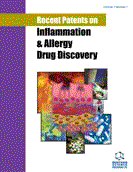Abstract
A significant proportion of bronchial asthma patients have underlying pulmonary fungal infections that contribute to persistent inflammation and allergic reactions. Aspergillus fumigatus is a ubiquitous opportunistic fungal pathogen causing a spectrum of allergic and infectious diseases. Currently, oral corticosteroids form the first line of treatment for allergic aspergillosis and use of antifungals such as itraconazole has been indicated in non-responders. In view of the protective role of innate immunity in host defense against Aspergillus fumigatus, we aimed to identify the relevant innate immune proteins In a series of studies, we identified and established the therapeutic potential of pulmonary collectins SP-A and SP-D and serum collectin MBL in murine models of allergic and invasive aspergillosis. Use of SP-D for diagnosis and therapy of lung disorders and MBL for therapy of various infections including invasive aspergillosis has been patented. Genetic polymorphisms in these genes may result in partial or total loss of function and may increase the hosts susceptibility to aspergillosis. Candidate gene association studies showed SNPs in SP-A2 and MBL significantly associate with patients of allergic bronchopulmonary aspergillosis and bronchial asthma with rhinitis. The patients carrying either one or both of GCT and AGG alleles of SP-A2 and patients with A allele at position 1011 of MBL had markedly higher eosinophilia, total IgE antibodies and lower FEV1 (the clinical markers of ABPA). These SNPs may be useful for predicting susceptibility to allergic aspergillosis and bronchial asthma with allergic rhinitis and have been patented. Elucidation of the immunoregulatory role of SP-A, SP-D and MBL in mechanisms of allergy and inflammation suggests that they may also be potentially useful for predisposition diagnosis and therapy of non-fungal bronchial asthma.
Keywords: SP-A, SP-D, MBL, aspergillosis, allergy, asthma, therapy, polymorphism
 3
3


















